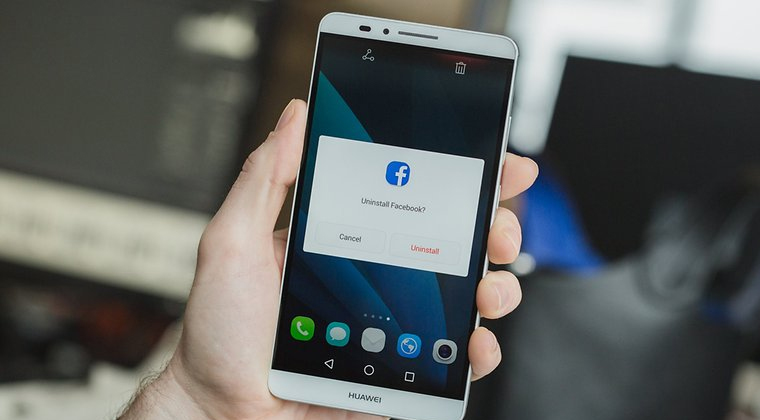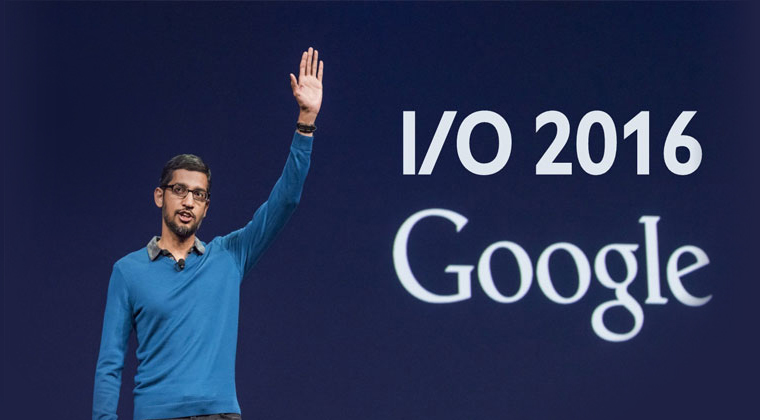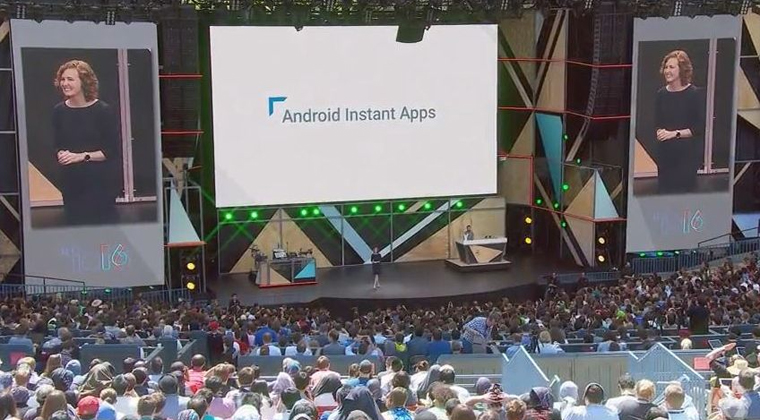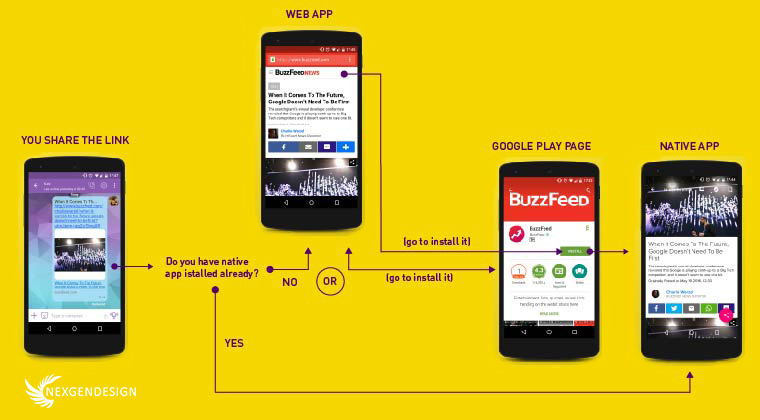
Let’s say you have an app that could run Facebook, EverNote and Instagram at a time? With that you can transfer payments, book a table in a restaurant, edit a photo, chat with friends – all that within a single app, not bad really?
In fact you already have one – your browser. You have an opportunity to switch from one website to another having several tabs open at a time. But there’s a problem about web apps – they’re slow, poor in terms of UI/UX and limited to using integrated services. That’s why most brands choose to release a stand alone native app to provide their users with extended functionality.

In May 2016, Google decided to change that by introducing instant apps as a part of their innovation at IO Conference (for deep overview make sure to visit their website). From now onwards Google puts their effort to allow Android users run native apps without the need to download them. Just by clicking the link. But first things first.
We’ve shortlisted the top updates you definitely should not ignore from the conference:
- Daydream: Google’s mobile VR (Virtual Reality) platform;
- Allo: messaging mobile-only app with your private Google Assistant;
- Duo: video messaging app similar to FaceTime available on iPhones;
- Google Home: a small speaker that is always in a listen mode to run your commands. Can be connected to other devices like Nest or Spotify;
- Google Assistantc: a lot like Siri, but more capable in the commands and replies range;
- Waze: app built into Android Auto allowing traffic tracking.
Along with the changes above, Google also introduced a revolutionary approach to running mobile apps without the need to install them.
More information, please

The first question coming to our minds is “What was the trouble Google tried to solve by introducing Instants?”
Really, any innovation aims to solve some problem. Was Google trying to improve the UX? Or perhaps instant apps were introduced to fight the OS fragmentation on our devices to save us some storage? Or maybe Google tries to solve the trouble of those who got stuck with the old OS versions (4 years or even older) and can’t install the latest apps from Google Play? Definitely, but more likely we should think the matter over once again.
Things work much simple. In fact, Google fights for staying the leading search service for mobile devices. That’s it. No drama at all.
The situation looks the following way: you search Google to solve some trouble, then it recommends you should install some app to complete the needed operation. You hesitate this app worth your time and storage and decide to quit. Eventually, you’ll solve your problem anyway even without downloading this specific app recommended by Google. Perhaps you’ll get another app, but those guys from Google haven’t closed the sale. Now looks more realistic, isn’t it?
So let’s go ahead. Now then we understand the background for this innovation, we are about to go on for technical details on this matter. The idea of instants is simple: you just have to click the link on a page and it will take you to the necessary place inside some app. Here’s a quick video on using BuzzFeed as an instant app.

As our local example let’s imagine your friend who has shared his latest awesome post on BuzzFeed and sent you a direct link to the post which is located on a specific page within the BuzzFeed app. Of course you could run the link via your browser, but you don’t feel like launching the browser to view what’s there. Here comes an instant app.
By just tapping on a link sent by your friend you’ll get that very post in a specific place of the app. Just one quick click to view the content without bothering to install the whole Tumblr app. The app can eventually offer you to install it, but it’s completely up to you to decide whether you need it. Magic, isn’t it?
The technology standing behind the idea of instants is very much like to the last year’s Apple introduction of the App Thinning during the WWDC. Google Play will just optimize some parts of the app according to the device requesting to get it installed. And by clicking the link containing information on the destination where it should take you, the user gets precisely the needed piece of content inside the app.
Deep linking
If you look at advertisements on a phone, it’s not like on a desktop. On a desktop, it’s about search. On mobile, search hasn’t happened. People aren’t searching on their phones. People are spending their time in apps. – Steve Jobs, 2010.
In fact that’s another idea standing behind instants. When using smartphones we expect to end up with an app. It has been a year already since Google’s revealed its plans to invent a url-like link leading to a native app which was called “app indexing and deep linking”. But the greater problem with the search is Spotlight search (offering the same deep linking) and Apple users who feel okay searching for apps on the AppStore.
Technical insights: Not so fast

What we have now is Google’s promise that it will take about a day for the developer to adjust the existing app to be displayed as instant on the web and this feature will become possible a bit later this year. So you won’t have to develop a brand new application from scratch, no way. Just a small upgrade will be needed.
Instants will take up to 4 MB as for the start, so it’s not clear how things will work with complex apps having numerous integrations or mobile games. After the release instants will be available for Android devices ran on Jelly Bean OS or later.
Developers who wish to give their users app-like experience by clicking a single link, will have to modularize applications so that a specific part of an app will be used by clicking a specific link. Without any installments. On top of that, that’s a rescue plan for apps which are rarely used. Like selling a small part and then offer its full version depending on a successful experience.
Feel inspired? So as we do! Drop us a line to start your app now and get ready for the innovation!





